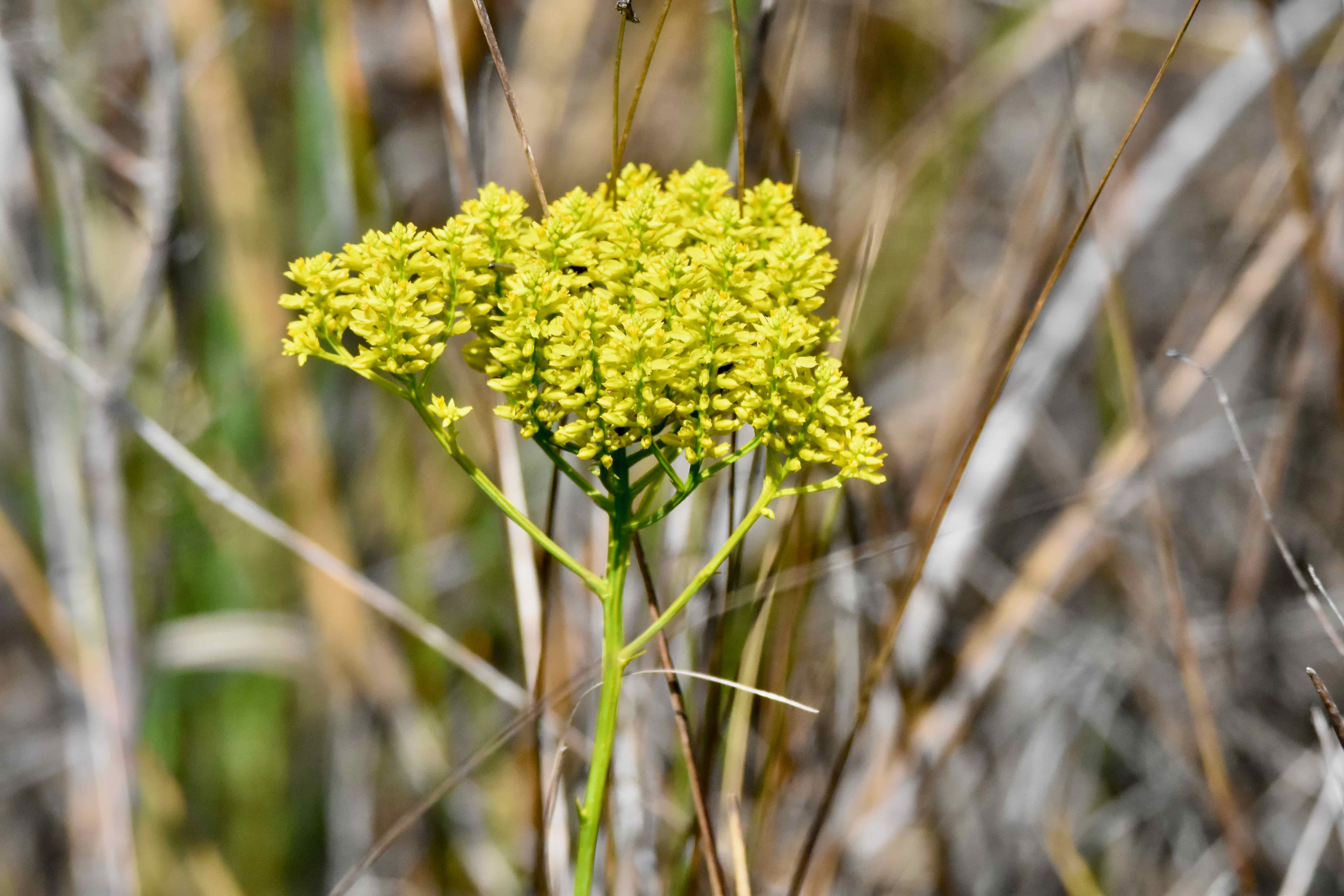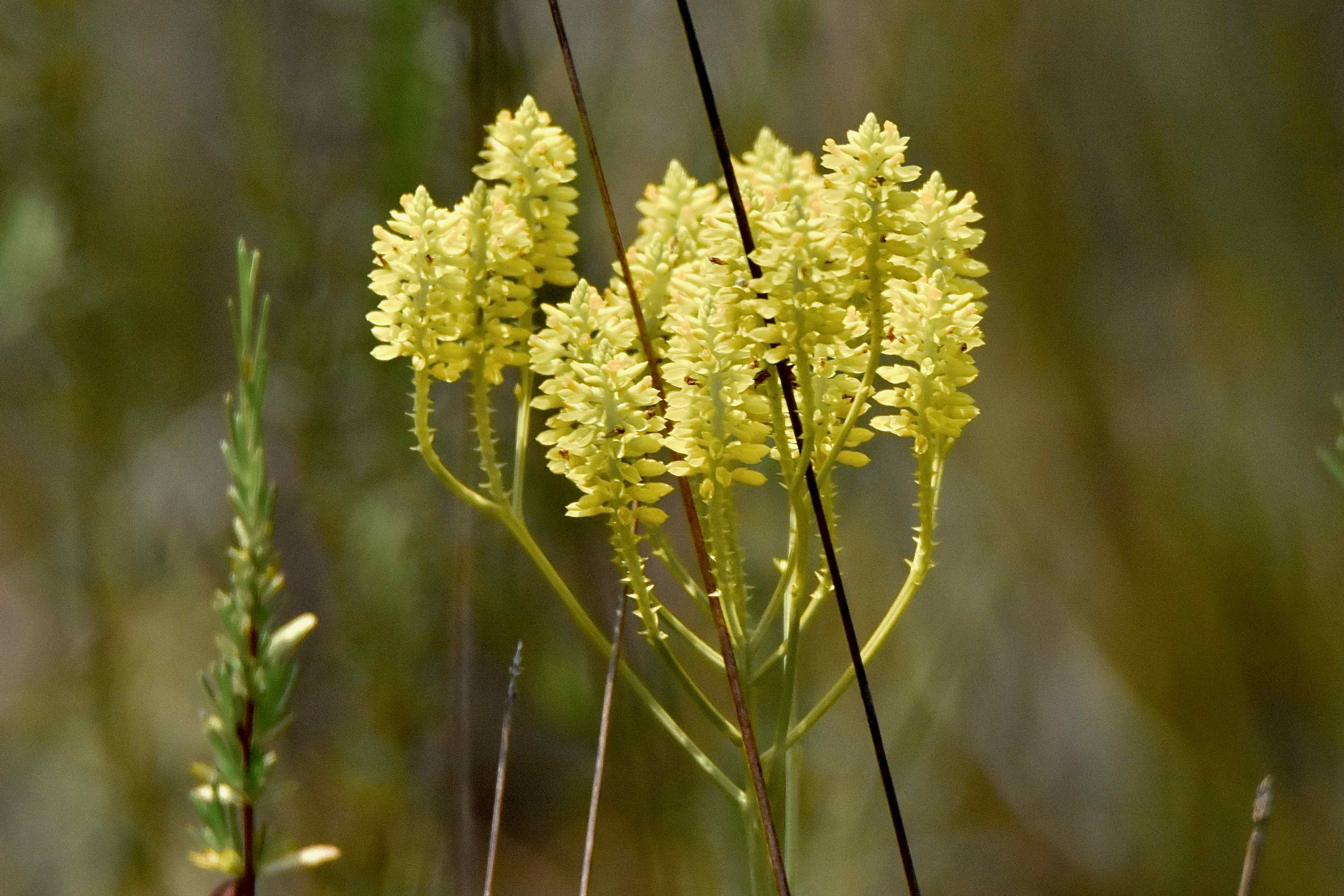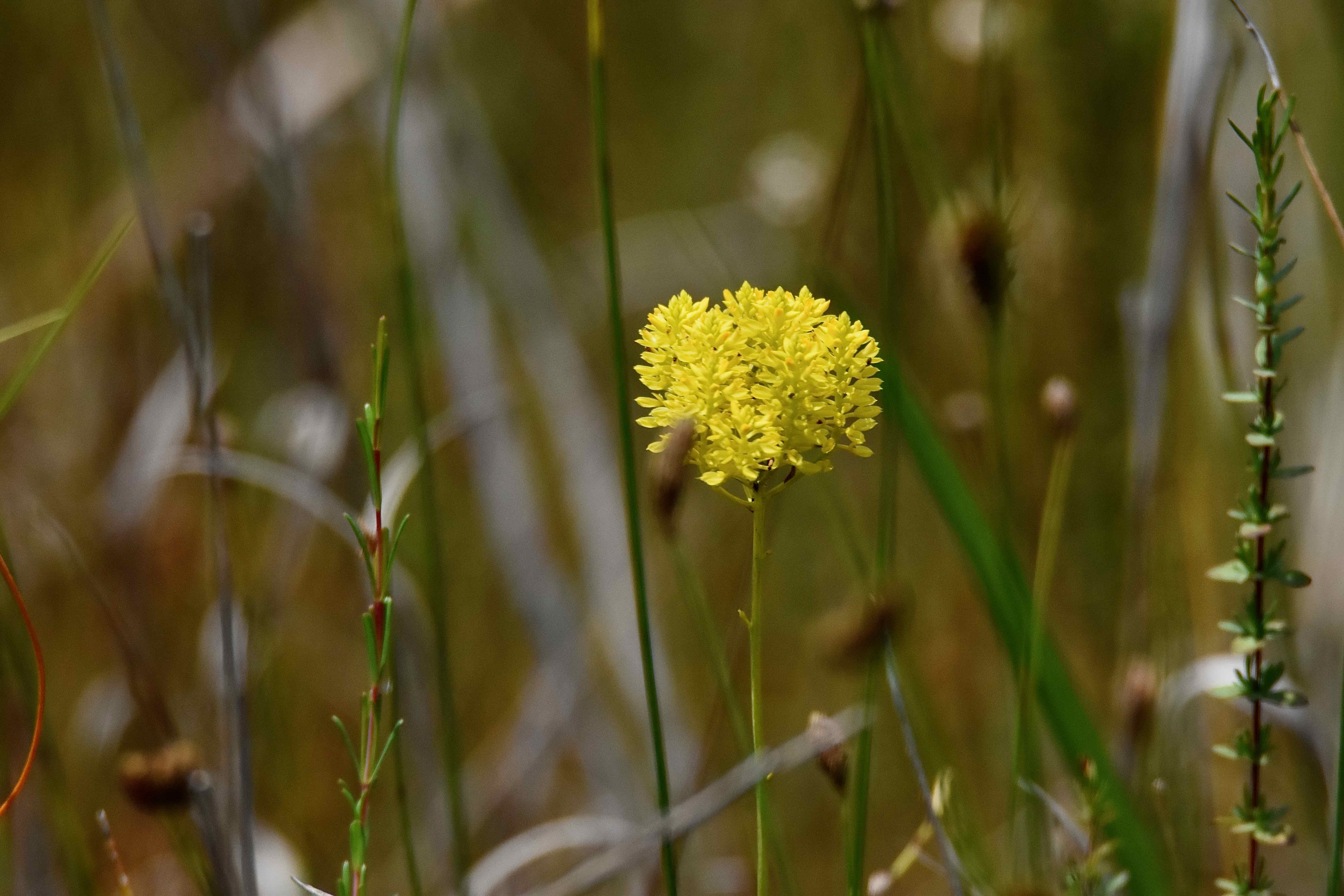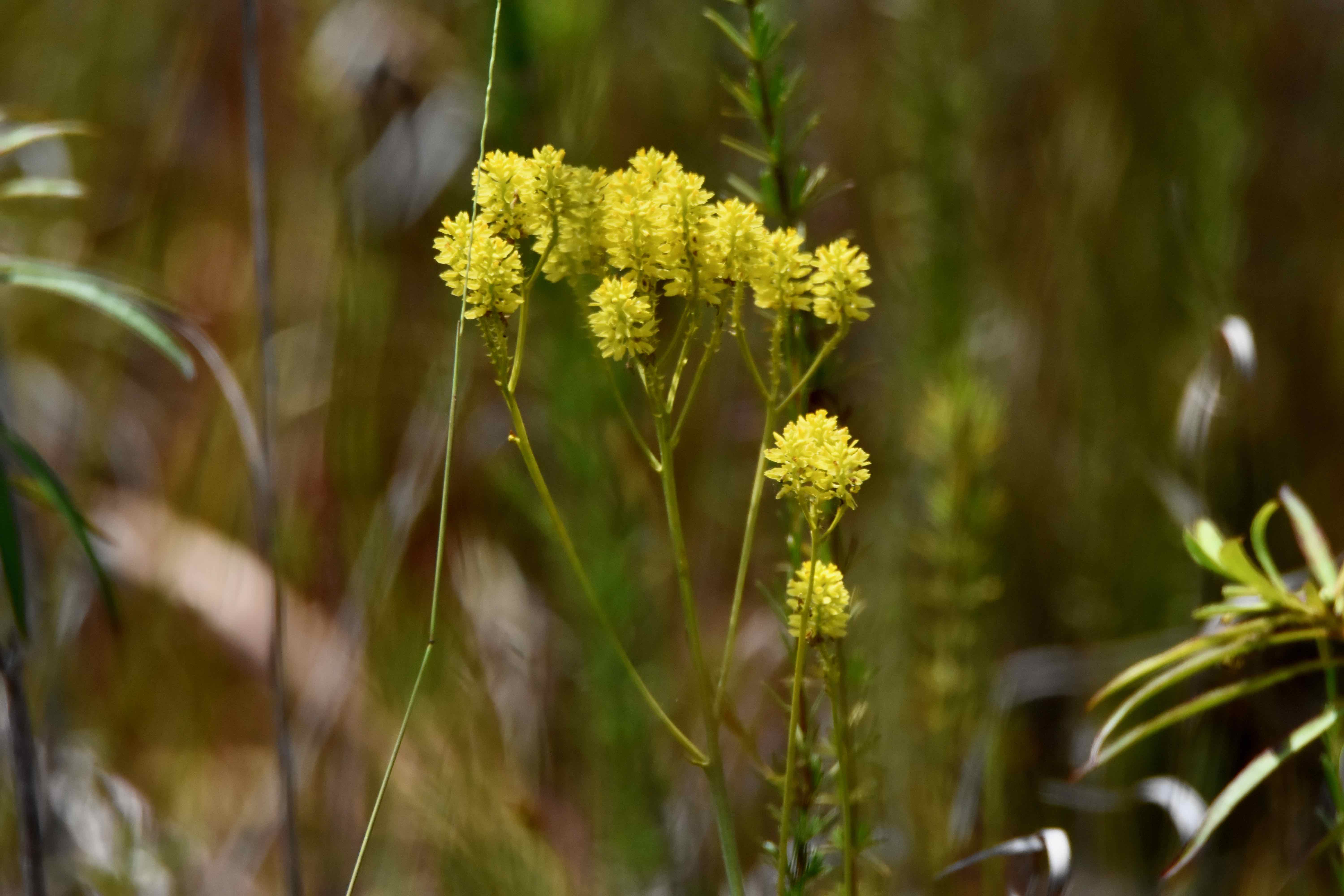
Tall pinebarren milkwort, photographed at Jonathan Dickinson State Park, Hobe Sound, Martin County, in April 2018.
Tall pinebarren milkwort, Polygala cymosa, has an unusual way of dispersing its seeds. It bribes ants into doing the job.
Tall pinebarren milkwort is a Florida native and a rather rare one. The Institute for Regional Conservation considers it imperiled in South Florida, but it is not listed as either threatened or endangered by the state or by any government within its range. It's found in most of the Peninsula as far south as Palm Beach County and into most of the Panhandle. Its range extends along the Atlantic and Gulf coastal plains as far north as Maryland and Delaware west into Louisiana and possibly Texas. It's believed to be extirpated, or locally extinct, within Delaware.
Like most plants in the Polygala genus, it fairly unobtrusive when not in bloom, almost impossible to miss when it is. Its flowers are small but clustered together atop spikes called inflorescences. Each spike has a flower at the growth, or terminal point, called a cymose, hence the species part of the plant's scientific name.
For most of the year, tall pinebarren milkwort is little more a cluster of leaves at the base of the plant. It blooms in April into July, when it can approach or exceed three feet tall. It is a biennial.
It has a similar-looking cousin, Polygala ramosa, or low pinebarren milkwort, that reaches less than half its height. Low pinebarren has similar blooms but they aren't as dense as tall pinebarren and appear later in spring and run deeper into summer. The name ramosa means branched.
The seeds of tall pinebarren milkwort have fleshy structures on the outside called elaiosomes that are rich in proteins and fats. These structures attract ants, who cart off the seeds to their nests, where they feed the nutrient-rich elaiosomes to their offspring (actually younger siblings, of course), then toss the remainder of the seeds outside the entrance where they germinate and form new colonies. This strategy of using ants to disperse seeds, called mymecochory, is common to all polygala members, or milkworts.
One thing that's different about our guy is that unlike other members of the genus, it requires wet places to survive. It's found in wetlands, cypress swamps, wet pine flatwoods, savannas and wet prairies. While it is rare, it can produce large colonies where it's found. Low pinebarren milkwort is also found in the same habitats, and it's equally rare as tall pinebarren milkwort.
A word about milkworts: polygala means much milk. The plants were given the name because it was once believed that fields where they grow were good places to graze dairy cows to increase their milk production. Native Americans used various milkworts as medicines for various ailments and condtions but we could not find any mention of tall pinebarren milkwort being specifically used.
Tall pinebarren milkwort is a member of Polygolaceae, the milkwort family. Other common names include tall pineland milkwort and tall milkwort.
Jonathan Dickinson State Park



